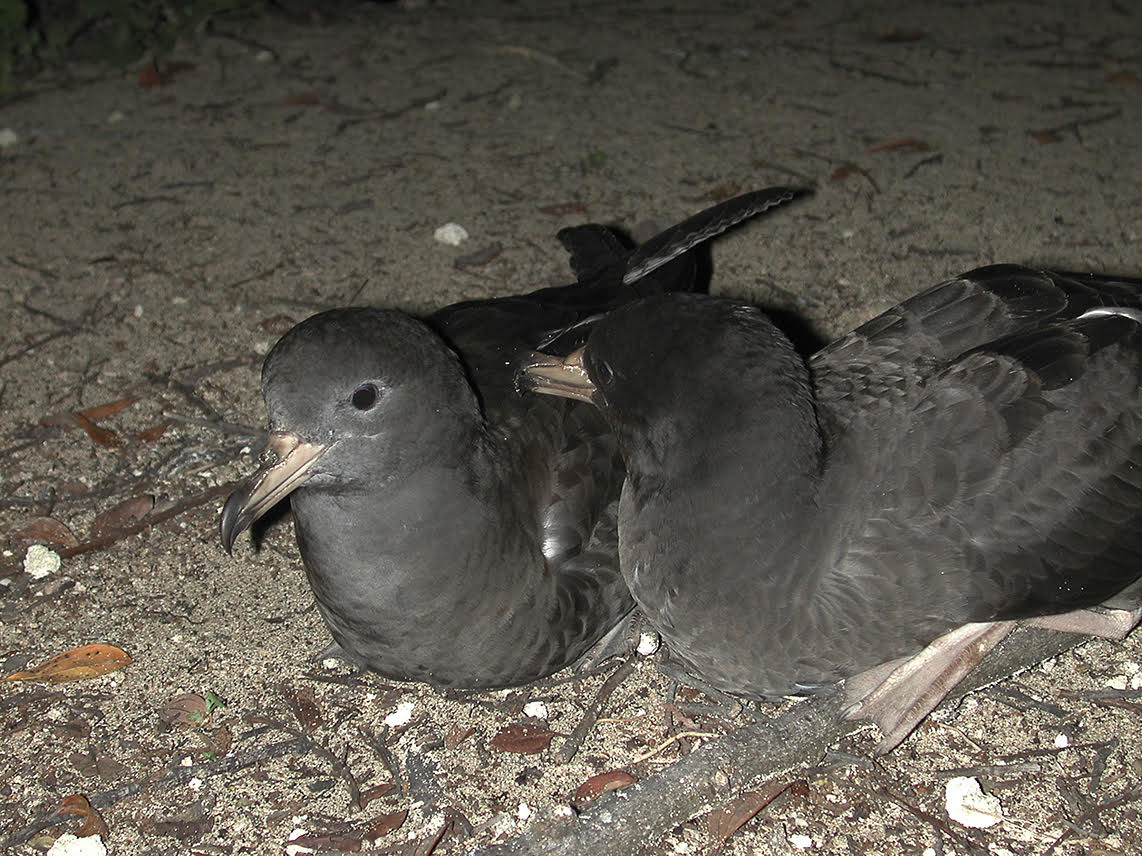Nicholas Carlile (Department of Planning and Environment, Hurstville, New South Wales, Australia) and colleagues have published open access a letter in the journal Global Ecology and Conservation commenting on a previous publication in the same journal that considered population changes in globally Near Threatened Flesh-footed Shearwaters Ardenna carnepeis on Australia’s Lord Howe Island.

A pair of Flesh-footed Shearwaters on Lord Howe Island, photograph by Ian Hutton
References:
Carlile, N., Priddel, D., Reid, T. & Fullagar, P. 2019. Flesh-footed shearwater decline on Lord Howe: rebuttal to Lavers et al. 2019. Global Ecology and Conservation doi.org/10.1016/j.gecco.2019.e00794,
Lavers, J.L., Hutton, I. & Bond, A.C. 2019. Changes in technology and imperfect detection of nest contents impedes [sic] reliable estimates of population trends in burrowing seabirds. Global Ecology and Conservation doi.org/10.1016/j.gecco.2019.e00579.
John Cooper, ACAP Information Officer, 13 October 2019

 English
English  Français
Français  Español
Español